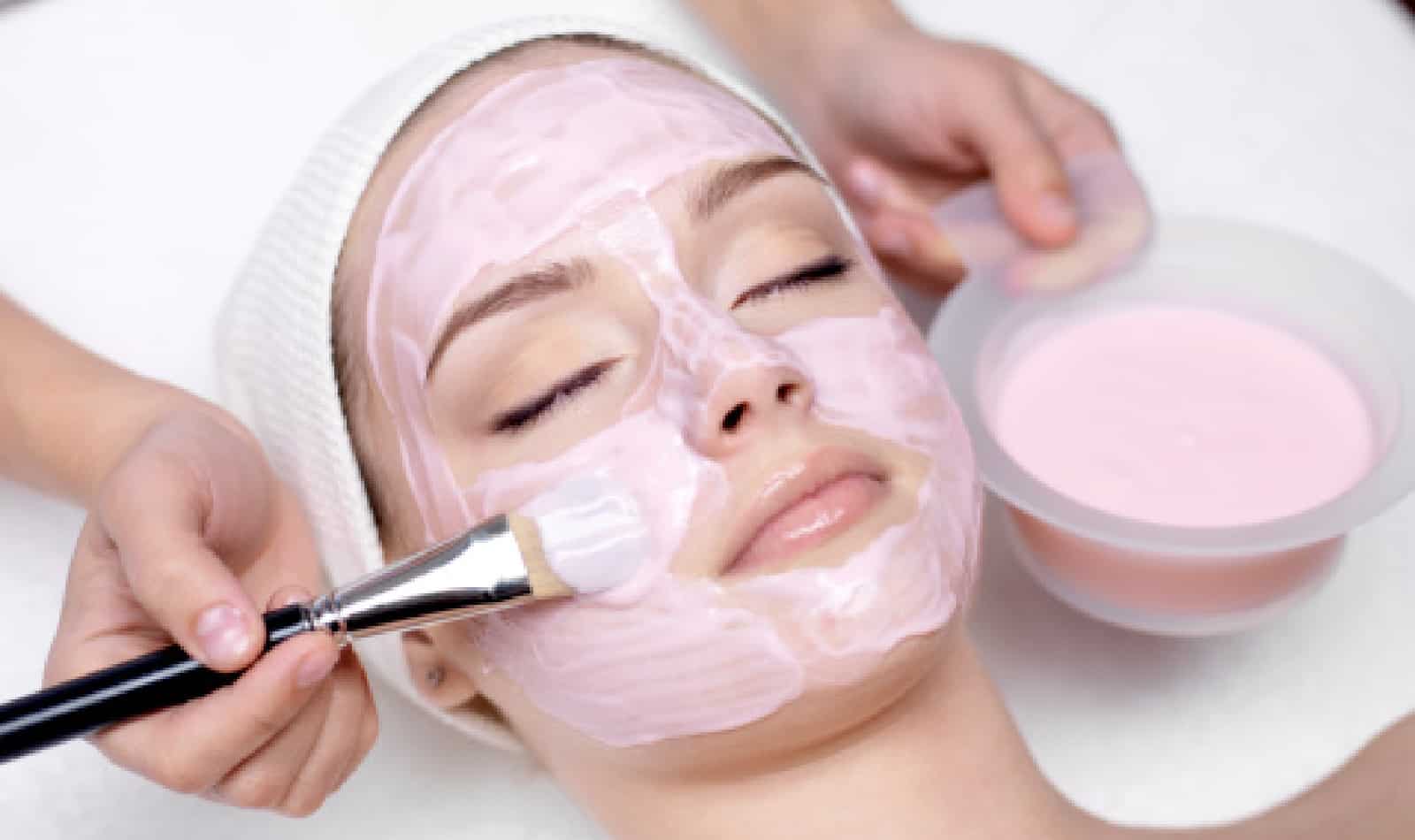I love making my own DIY clay face masks as part of my cheap skincare routine.
Honestly, they’re so easy to make, there’s really no reason to buy one!
If you’re looking for some inspo, I’ve rounded up all of our clay mask ideas into one handy guide.
Plus, I’m adding a few formulas for endless DIY possibilities!

DIY Clay Face Masks for Positively Radiant Skin
When I said that clay face masks were easy and cheap to make, I wasn’t lying.
I know a lot of people say, “oh, this is so easy,” then give you like 500+ steps and a list of rare earth mineral ingredients.
I have virtually nil crafting skills and an even smaller budget, but I’ve been making my own skincare products for years.
Not everything, mind you. I’ve never mastered soap making (my mom used to, though, and homemade soap is ah-mazing).
I also stink at making lotion (too many ingredients, too many steps).
Masks, however, are on my list of “things that are so crazy cheap to make, why bother buying them?”
That’s not to say I never buy masks (I like the K-beauty ones that make you look like a serial killer while you’re wearing them).
When it comes to clay masks, though, I ALWAYS DIY instead of buy.
Enough rambling, let’s get to the real reason you’re here: our list of recipes!
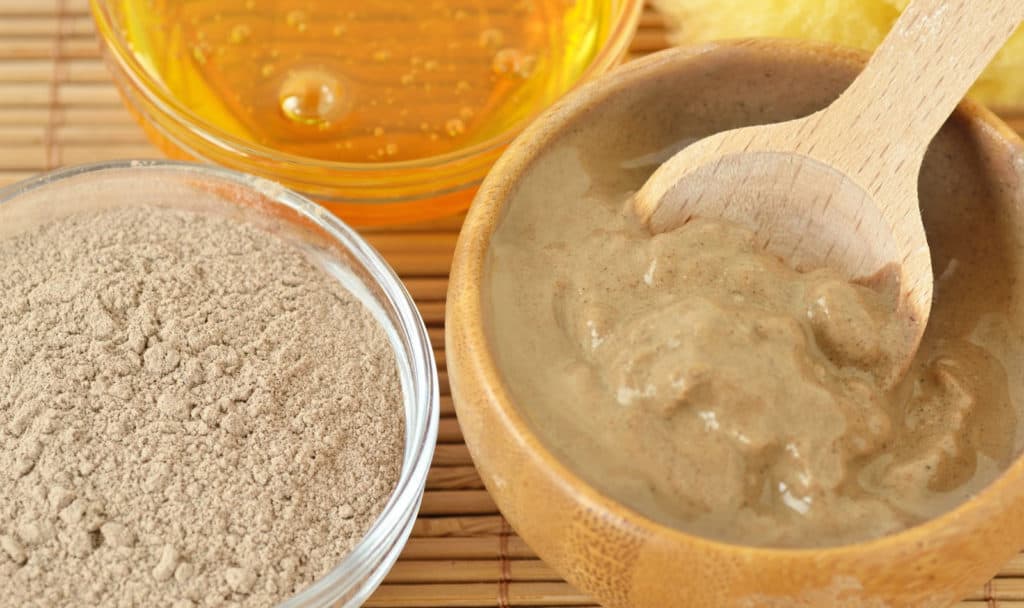
Clay Face Masks to Make at Home
One quick little note: when we talk about benefits, we’re not making medical claims.
Also, if you have certain skin conditions, talk to your dermatologist before trying any new product, even a DIY one.
Clay has a long history of use in skincare products and is considered very safe, but it’s still possible to have an allergic reaction to it.
So always do a small skin patch text on your forearm before slathering it on your face.
If you’re curious about the differences between clays, this video below explains kaolin vs. bentonite:
Related: Face Masks For Dry Skin
This one discusses all three in terms of hair care (but the same basic principles apply to skin care):
Let’s dive into those mask ideas now, shall we?
I’m going to break this down by the three main types of clay that we discussed.
Easy Bentonite Clay Face Masks
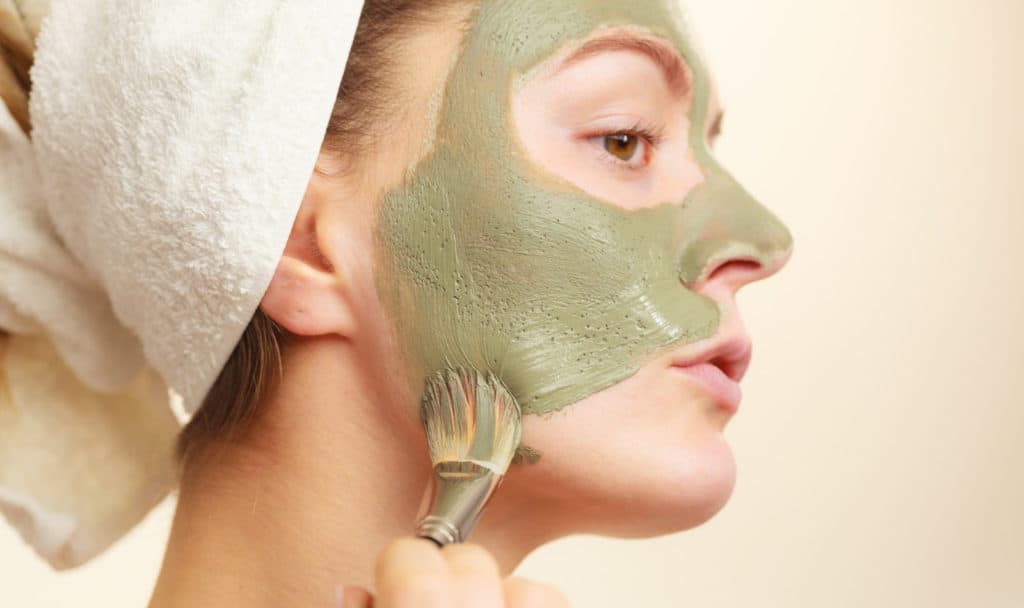
Up first, we have some great Bentonite clay face masks for you to make.
Did you know that bentonite has been used for thousands of years for skin care?
According to WebMD, it’s both antibacterial and anti-inflammatory.
Since it draws out impurities in your pores, it’s a great choice for acne.
It’s also very soothing on itchy skin, such as a rash from poison ivy.
We shared 7 Effective Bentonite Clay Face Masks, including a few that you can buy.
I highly recommend starting there, because we covered some pretty diverse options.
The one in the video below is my personal favorite:
Related: Face Masks for Glowing Skin
You can also use bentonite clay in some of these 8 Luxurious At-Home Face Masks Without Honey.
Face Masks Using Kaolin Clay
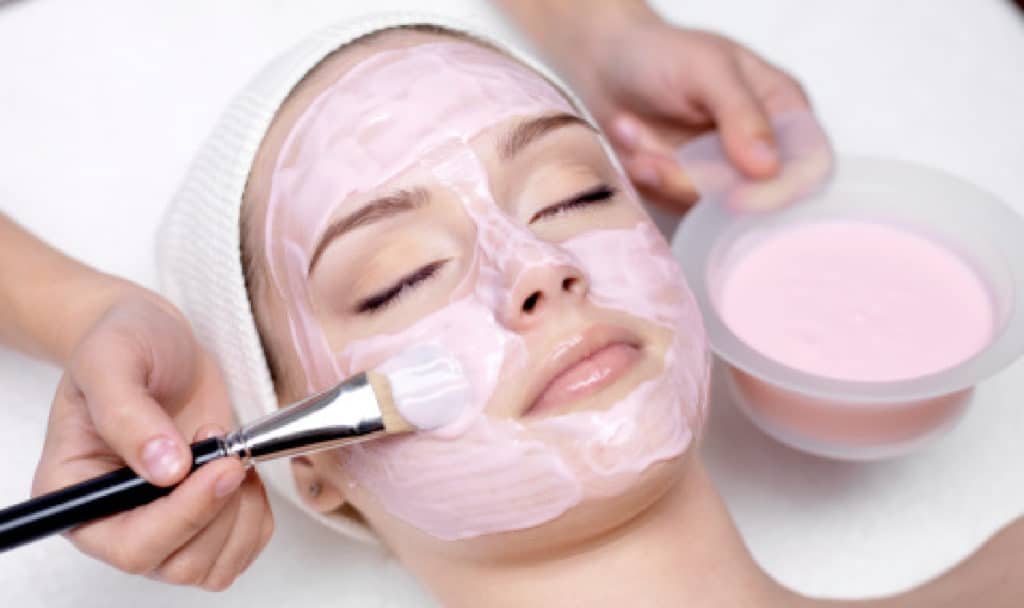
Kaolin clay, also called white or China clay, is a very mild type that’s often used in masks for sensitive skin.
According to Pacific Aura Botanicals, while it’s usually white in color (hence the AKA above), it can be pink as well.
Unlike bentonite- which typically calls for a 1:1 ratio of clay & liquid- kaolin requires less water to achieve the perfect spreadable consistency.
This is the perfect clay to use if you’re trying to even out your skin tone and get rid of red or dark patches.
Check out some of the other benefits of Kaolin clay for skin and learn how to use it in your routine.
Then, try one of these amazing Kaolin clay face masks to buy or DIY.
Here’s my favorite:
You can also use kaolin in these at-home turmeric face masks.
I like it because it evens out the intensity of turmeric.
Perfect Rhassoul Clay Mask Ideas
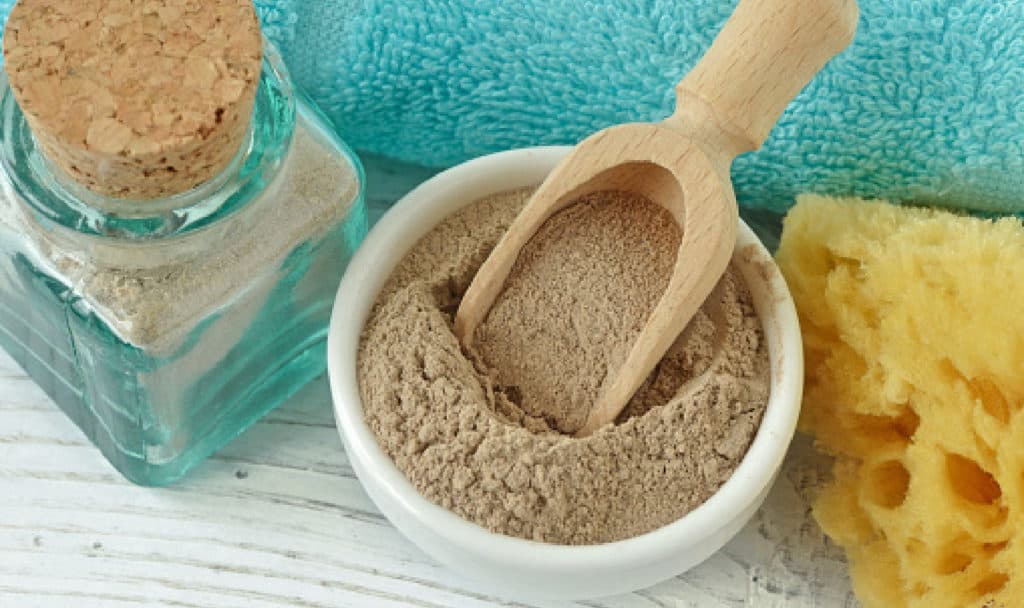
I’ll admit, Rhassoul is fairly new to me and I haven’t really used it as much as the others.
According to Healthline, the brown clay comes from mountains in Morocco, and the word itself originates from the Arabic word for “to wash.”
It’s a thicker clay, so you’ll actually need two tablespoons of liquid for each tablespoon of rhassoul to reach the right texture.
If you’re curious about why you’d want to splurge on this type, check out these 6 benefits of rhassoul clay for hair and skin.
We also shared some DIY mask ideas in that post, but you’ll find even more on this list of rhassoul clay masks to make or buy.
Here is my favorite:
Throughout all of those posts mentioned above, you’ll find at least 30 different ideas to get you started.
However, if you need more ideas, here are a few “formulas” that will allow you to make endless possible masks
Clay Mask Formulas for Endless DIY Possibilities
From an easy 2-step mask to lush fruity ideas, these are the formulas and steps that I use to make my own clay masks.
One quick note- only make as much as you’ll use right away.
Clay masks don’t really hold up well in jars and whatnot.
Super cheap 2-ingredient clay & water formula
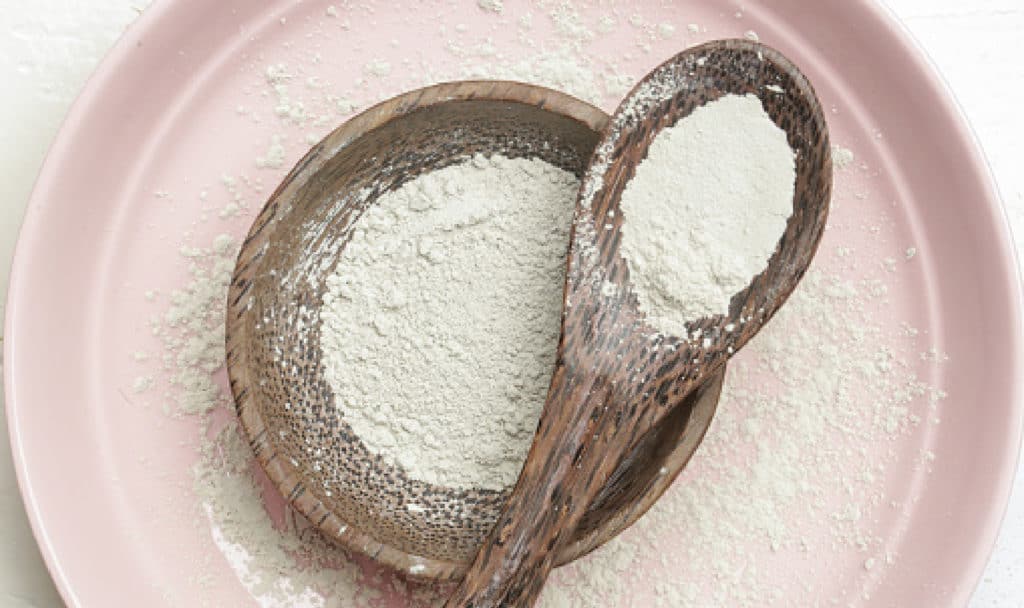
Literally all you need for this is clay and water! If possible, go with purified water.
If you don’t have any on hand, though, you can use tap water, as long as it’s safe (if you can drink it, you can use it on your skin).
The ratios of water to clay depend on the type, as we mentioned above.
Here’s a recap, though:
- Bentonite – one part clay, one part water
- Kaolin – two parts clay, one part water
- Rhassoul – one part clay, two parts water
Honestly, though, it’s not always an exact science.
I usually start with my clay in a bowl and add a few drops of water, stir, add a few more, stir, etc. until I like the consistency.
Apple cider vinegar instead of water
You can also use apple cider vinegar in place of the water.
Many people swear by it, and it does create a thicker more “store-bought mask” consistency.
However, you’ll want to cut back a bit on it in the ratios, or increase the amount of clay that you use.
For the most part, you’ll need to increase the amount of clay by half. So if you use 1 tbsp. of ACV, use 1.5 tbsp. of clay.
Again, add a little at a time until it’s the right texture.
Check out the video below to see a side-by-side comparison.
Clay masks with essential oils
If you want to add essential oils to your clay mask, here’s how I do it:
- Start with 1-2 tablespoons of your choice of clay
- Add ONE drop of essential oil (a little goes a very long way, see notes below)
- Stir it up a bit.
- Slowly add a carrier oil (see below) a few drops at a time stirring as you go.
- Continue adding carrier & stirring until you like the consistency.
For carrier oils, you can use sweet almond, jojoba, or even olive oil.
Please, be VERY careful about how you use essential oils in anything that goes on your face.
Some can be very hard on your skin.
I know a lot of face mask recipes that are popular on Pinterest call for peppermint, but I find it way too powerful for my sensitive face.
It’s fabulous in homemade foot masks and scrubs, though!
The best options for your face include:
- Lavender
- Tea tree oil
- Chamomile
- Rose*
- Neroli
- Patchouli
- Ylang-ylang
*Real rose oil is SUPER expensive. If it’s cheap, it’s not real. It’s a great oil, but there are cheaper alternatives that work just as well.
I like the video tutorial below, but I don’t use their oils (or the ones from the other popular MLM brand) because their prices are absurdly inflated.
Masks with fruits and other fresh ingredients
You can also add clay to masks made with fresh fruits, like avocado, banana, and so on.
The overall experience is a bit different. Unlike other clay masks, this one doesn’t really dry on your skin.
You just slather it on and leave it for about 20 minutes, then wipe/rinse off.
There’s really no perfect formula for that, but here’s what I usually do:
- Start by mashing up my fruit (bananas are great, and cheap)
- Add clay (about 1 tablespoon)
- Mush it together really well.
- Slowly add liquid, mushing and stirring until I like the texture.
This video below shows another great method using clay, avocado, and banana.
Between the ideas I shared way up above and these easy formulas, you can literally make thousands upon thousands of DIY clay face masks.
Since YOU control the ingredients, you’ll know exactly what you’re putting on your skin.
Plus, you’ll save a boatload of cash! That’s a win/win in my book.
